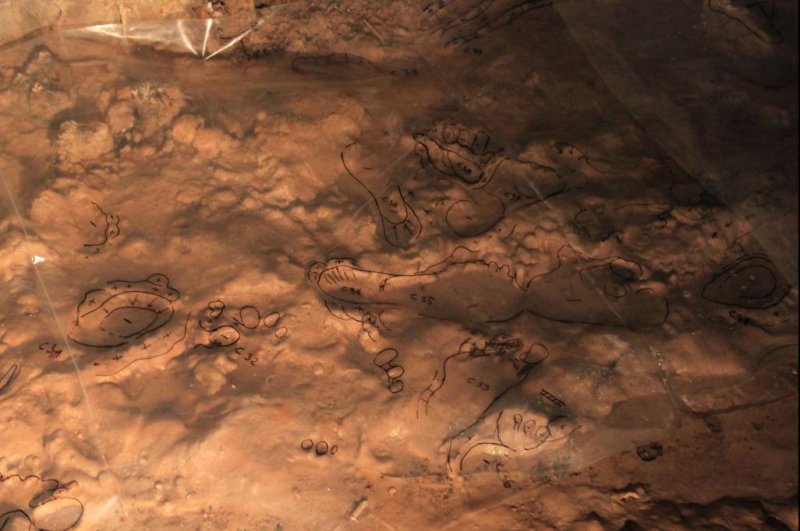Scientists analyzed hand, knee and foot prints left by late Stone Age humans inside an Italian cave. Photo by Emily Packer/Marcomms
May 14 (UPI) -- Families that crawl through damp, dark caves together, stay together, apparently.
Archaeologists have discovered 14,000-year-old evidence of a crawling expedition through an Italian cave. The evidence suggests the crawlers were members of a late Stone Age family of sorts, a group including two adults and three children.
Archaeologists have known about the Bàsura at Toirano cave and the traces of human and animal visitation within since the 1950s, but the latest study is the first to look at how early humans explored the unique environs.
"In our study, we wanted to see how ancient humans explored this fascinating cave system," Marco Romano, postdoctoral fellow at the University of the Witwatersrand in South Africa, said in a news release. "Specifically, we set out to discover how many people entered the cave, whether they explored as individuals or as a group, their age, gender and what kind of route they took once inside the cave."
Romano and his colleagues determined two adults and three children, ages 11, six and three, explored the cave together. The explorers entered barefoot and lit the way using long wooden sticks.
Scientists used different types of 3D modeling, computer simulations and radiocarbon dating techniques to analyze the tracks inside the cave, revealing the group's patterns of exploration.
"Together, these approaches allowed us to construct a narrative of how the humans entered and exited the cave, and their activities once they were inside," Romano said.
The analysis revealed the first evidence of crawling behavior among early humans. The group moved on their hands and knees through a low tunnel to access an inner portion of the cave.
Analysis of the different hand prints left throughout the cave suggests some of the group members' movements were more intentional than others. Some movements were likely exploratory in nature, searching gestures, while others reflect a great precision and purpose.
"Hunter-gatherers may therefore have been driven by fun activities during exploration, as well as simply the need to find food," Romano said.
Researchers shared their analysis of the ancient evidence of cave exploration this week in the journal eLife.
"Together, our results show how a varied approach to studying our ancestors' tracks can provide detailed insights on their behavior," said Marco Avanzini, head of the geology department at the Trento Museum of Science in Italy. "We hope our approach will be useful for painting similar pictures of how humans behaved in other parts of the world and during different periods of time."















